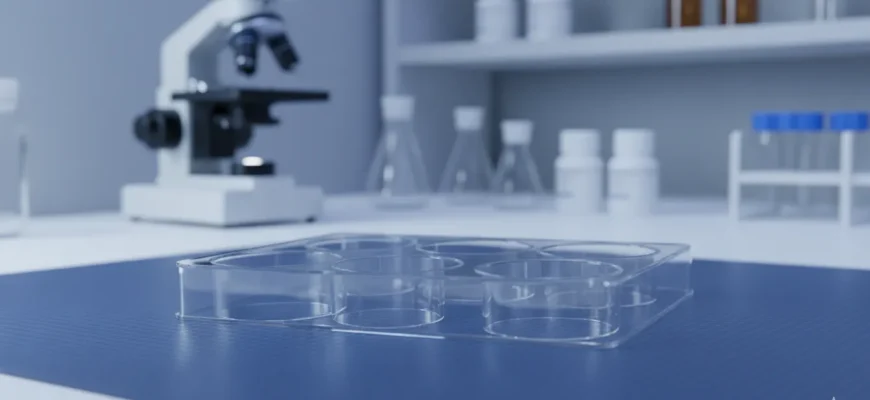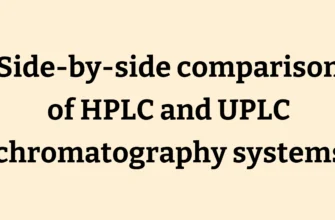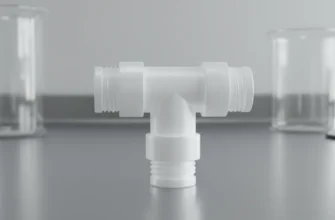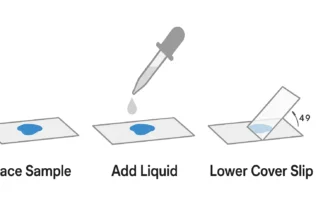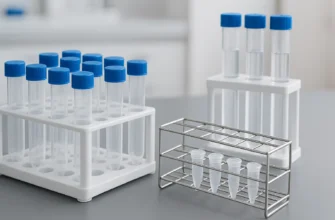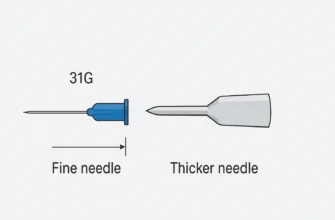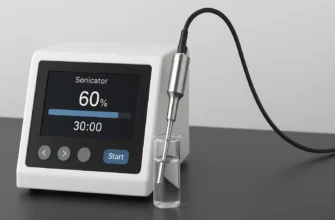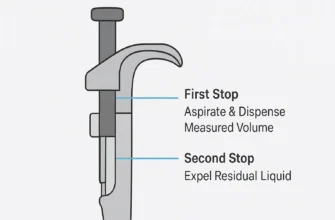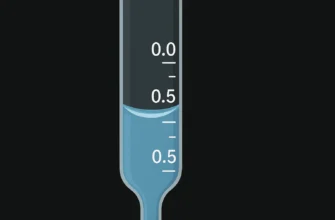6-Well Plates for Consistent Assay Results
6-well plates are a standard tool in cell biology labs, providing a balance of well size for sufficient cell growth and multiple replicates for reliable assay outcomes. Their design supports uniform cell distribution, which is essential for reproducible results in experiments like drug screening and cell viability assays.
Key Highlights
6-well plates enable consistent cell culture by offering controlled environments that minimize variability in adhesion and growth. Material choices, such as polystyrene, ensure optical clarity for imaging, while surface treatments like tissue culture (TC) modification promote cell attachment for adherent lines. Non-treated options suit suspension cultures by preventing unwanted adhesion. Specialized coatings, including extracellular matrix proteins, improve viability by mimicking physiological conditions. Selection should align with cell type, assay type, and goals like high-throughput screening.
Introduction
In cell culture, reproducibility hinges on tools like 6-well plates, which provide a standardized platform for cell attachment and growth. These plates, typically made from clear polystyrene, allow microscopic observation and support various assays from basic research to toxicology. Proper selection based on surface properties ensures optimal cell behavior and data reliability.
Role in Assay Consistency
6-well plates standardize the microenvironment, influencing cell adhesion and proliferation to yield uniform results across wells. Uniform distribution reduces experimental variability, supporting high viability and predictable responses. Factors like surface hydrophilicity directly affect attachment, making plate choice critical for assays involving migration or differentiation.
Popularity in Labs
The 6-well format balances volume for cell expansion with space for replicates, ideal for testing conditions like drug doses. It accommodates both adherent and suspension cells, enhancing versatility in research from morphology studies to high-throughput screens. Manufacturers like Corning, Thermo Fisher Scientific, and Greiner Bio-One provide options with proven compatibility, including sterile, optically clear designs.
Applications
6-well plates support diverse uses, including drug toxicity testing, cell migration analysis, tissue engineering, and protein production. Compared to flasks, they enable parallel testing of conditions, conserving resources in high-throughput workflows. For morphology studies, TC-treated surfaces ensure even spreading.
Materials
Cell culture plates are primarily polystyrene for its inertness and clarity, though polycarbonate offers durability for demanding assays. Surface modifications introduce functional groups to enhance biocompatibility. Polypropylene suits chemical-resistant storage but is less common for active cultures.
Common Substrates
Polystyrene dominates due to its modifiability; TC treatment converts its hydrophobic nature to hydrophilic for better adhesion. Polycarbonate provides strength for applications needing robustness, like mechanical stress tests. These materials form the base for further enhancements like ECM coatings.
| Material | Key Properties | Common Use |
|---|---|---|
| Polystyrene (PS) | Optically clear, modifiable, inert | General culture, imaging |
| Polycarbonate | Strong, chemically resistant | Durable assays |
| Polypropylene | Solvent/heat resistant | Storage, non-culture |
Material Impact on Performance
Material selection affects adhesion, influencing viability and differentiation; mismatched choices lead to poor growth. Sensitive cells, like primary lines, often require coated polystyrene to replicate in vivo matrices. Consistent materials ensure data variations stem from experimental factors, not artifacts.
Dimensions and Capacities
Standard 6-well plates feature wells with ~35 mm diameter, providing ~9.6 cm² surface area for cell seeding. Depth allows 15-17 mL total volume, but working volumes of 2-3 mL optimize gas exchange and prevent overflow. These specs support seeding densities from 0.3-1.2 × 10^6 cells per well, depending on line.
Well Specifications
Well diameter determines attachment area, while depth governs media depth for diffusion. Working volume maintains pH and nutrients; exceeding it risks hypoxia. Variations exist by brand, but standards ensure interoperability.
| Parameter | Typical Value |
|---|---|
| Well Diameter | ~35 mm |
| Growth Surface Area | ~9.6 cm² per well |
| Total Well Volume | ~15-17 mL |
| Working Volume | 2-3 mL per well |
Seeding Optimization
Optimal seeding avoids overcrowding or sparsity; densities vary by proliferation rate and experiment length. For 6-well plates, aim for 0.3-0.5 × 10^6 cells/well for many lines to reach 70-80% confluency in 3-5 days. Adjust for cell size and surface type to ensure even distribution.
-
Proliferation Rate: Lower for fast growers
-
Duration: Fewer cells for long-term
-
Confluency Goal: Sparse for migration, dense for harvest
-
Cell Size: More space for larger cells
Surface Treatments
TC-treated plates feature plasma or chemical modification for charged, hydrophilic surfaces aiding adhesion. Non-treated plates remain hydrophobic, suiting free-floating cultures. Choice prevents artifacts like clumping in suspension assays.
TC-Treated Advantages
TC surfaces support fibroblasts and epithelia by promoting monolayer formation. They enhance viability in attachment-dependent assays like wound healing.
-
Robust attachment for diverse cells
-
Improved proliferation
-
Morphology preservation
-
Drug screening compatibility
Non-Treated Uses
Non-treated plates maintain suspension integrity for lines like hybridomas. They facilitate spheroid formation without adhesion.
-
Suspension growth
-
Aggregate assays
-
Protein production
-
Biochemical tests
Coatings for Attachment
Coatings like collagen mimic ECM, boosting adhesion for stem or primary cells. Poly-lysine provides charge-based binding.
ECM Coatings
Collagen I suits general use; type IV targets basement membranes. Fibronectin aids integrin binding; laminin supports neurons.
-
PDL: Electrostatic adhesion
-
Fibronectin: Glycoprotein matrix
-
Laminin: Neuronal substrate
Pre-Coated vs. Custom
Pre-coated ensure uniformity but limit flexibility; custom allows tailoring. Pre-coated save time for routine work.
-
Convenience: Pre-coated
-
Consistency: Factory uniformity
-
Customization: In-house mixes
-
Cost: Custom cheaper long-term
Selection Criteria
Evaluate cell needs against plate features for assay success. Compatibility with readers and sterility are key.
Practical Factors
Ensure fit with automation; opt for gamma-sterilized plates. Budget favors standard polystyrene.
-
Cell Type: Adherent/suspension
-
Assay: Imaging/harvest
-
Sterility: Certified
-
Compatibility: Equipment
-
Budget: Quality vs. cost
Leading Brands
Corning (Falcon®) excels in TC-treated options; Thermo Fisher (Nunc™) in versatile lines. Greiner (CELLSTAR®) offers repellent surfaces.
| Brand | Parent Company | Notable Lines |
|---|---|---|
| Corning® | Corning Inc. | Falcon®, BioCoat™ |
| Nunc™/Gibco™ | Thermo Fisher | UpCell™, HydroCell™ |
| CELLSTAR® | Greiner Bio-One | Cell-Repellent |
| Cell+ | Sarstedt | General culture |
Handling and Maintenance
Sterile handling in hoods prevents contamination; store at room temperature sealed. Avoid well contact.
Guidelines
Open only in sterile areas; stack minimally. Check expiry.
-
Room temp, dry storage
-
Hood opening
-
Edge handling
-
Expiry check
-
No UV exposure
Reuse and Sterilization
Disposable plates are single-use to avoid residue damage. Manufacturer gamma sterilization suffices; autoclaving risks coatings. Dispose as biohazard.
Conclusion
6-well plates ensure assay consistency through tailored materials and treatments. Aligning choices with protocols maximizes reliability.
Frequently Asked Questions
Cell Suspension Volume
Use 2-3 mL per well for optimal density; calculate cells based on type.
Reuse and Cleaning
Avoid reuse; cleaning damages surfaces and risks contamination.
Sterility Precautions
Work in cabinets, handle edges, open pre-use.

